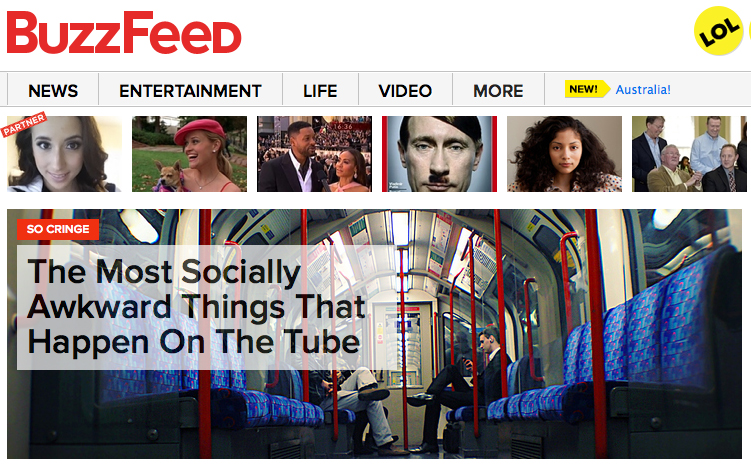Media Headhunters’ View: native advertising is here…and don’t brands seem to love it?

When you click to a web page how often do you notice the adverts that surrounds the content you’re interested in? One in ten? One in 20 times?
It may be a crude approach but banner advertising is the established – if unspectacular – way publishers generate the bulk of their online revenue.
But as mobile usage increases publishers have found it hard to innovate the humble banner ad and link valuable click-through info to customers; couple that with increasing consumer ‘blindness’ to banners and you have a system in need of overhaul.
Brands and publishers looking to innovative with alternative models are rapidly turning to native advertising as a way of offsetting the growing limitations of banner ads.
The recent State of Native Advertising 2014 Study of 1,000 US and UK publishers, brands and agencies – conducted by Hexagram and Spada, a B2B communications firm – found that native advertising now accounts for 20% of publisher revenues, with the expectation this will grow by a further 50% in a year’s time.
It’s not easy to define exactly what constitutes native advertising. The Hexagram survey suggests that content marketing, advertorials, other sponsored online and social media content, and even search ads, can be defined as such – but even this definition doesn’t fully explain the role native advertising performs. Perhaps, it’s simpler to say native advertising is any content published by – or on behalf of – a brand, with the intention of satisfying a consumer need for particular information or entertainment at any give time.
What is certain is that native advertising is becoming increasingly vital to publishing revenues. Predictions by eMarketer suggest that by 2017 the fledgling native ads market in the US will be worth $4.5bn (£2.8bn), with the established display ad market just ahead at $6.4bn (£3.9bn).
But it isn’t just publishers that should sit-up and pay attention. If content is replacing banner ads, naturally, the Comms industry’s attention should be grabbed. However, it seems to have been slow to react.
Despite recognising the importance of native advertising, just 34% of Comms agencies polled by the Hexagram study said they offered to produce native content for clients.
Not all publishers have taken to native advertising with the same relish as Buzzfeed, but the report does highlight a growing appreciation by publishers of ‘sponsored’ content over display advertising – 62% of publishers said they took this kind of content. So, if it’s not coming from the agencies, where is it coming from?
The Hexagram survey suggests brands are doing the job for themselves. Two thirds (66%) of brands said they create native ad content on their own, with 24% saying they put these campaigns together directly with publishers. Only 24 per cent said the native campaigns they put together were in conjunction with agencies.
I noted last month the reason media headhunters are increasingly asked by corporations to find savvy digital chiefs was to satisfy engaged consumers with engaging content, but is there also a gap developing between brands and the Comms industry?
Brands are serious about developing as content creators…but who’d have thought it would be at the expense of the agencies that used to serve them?